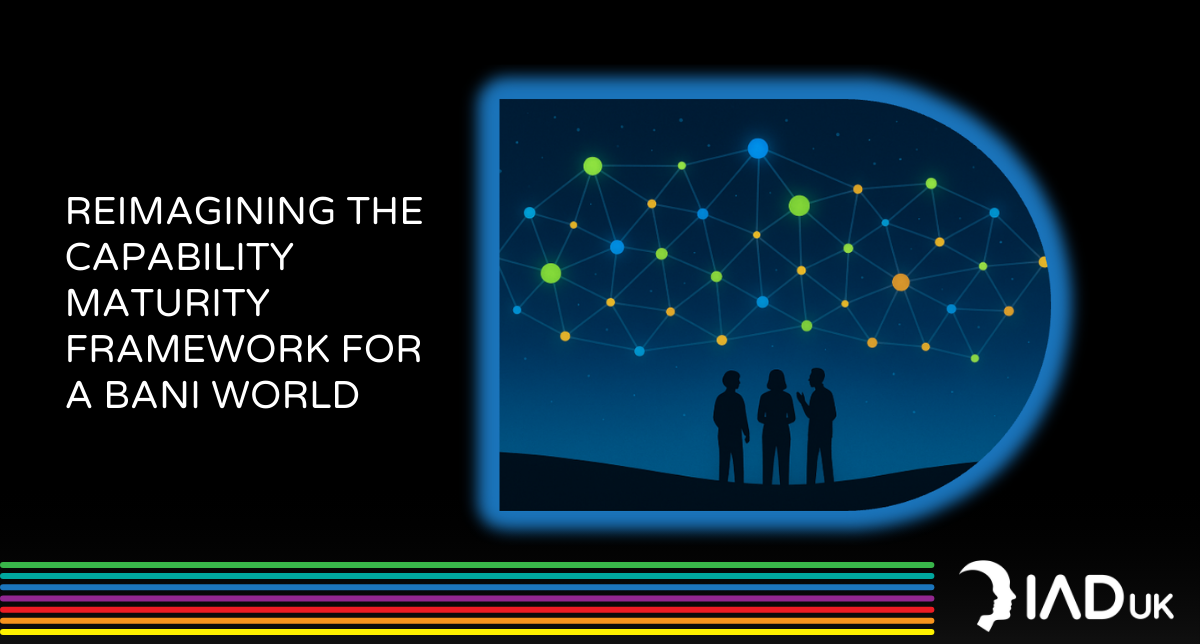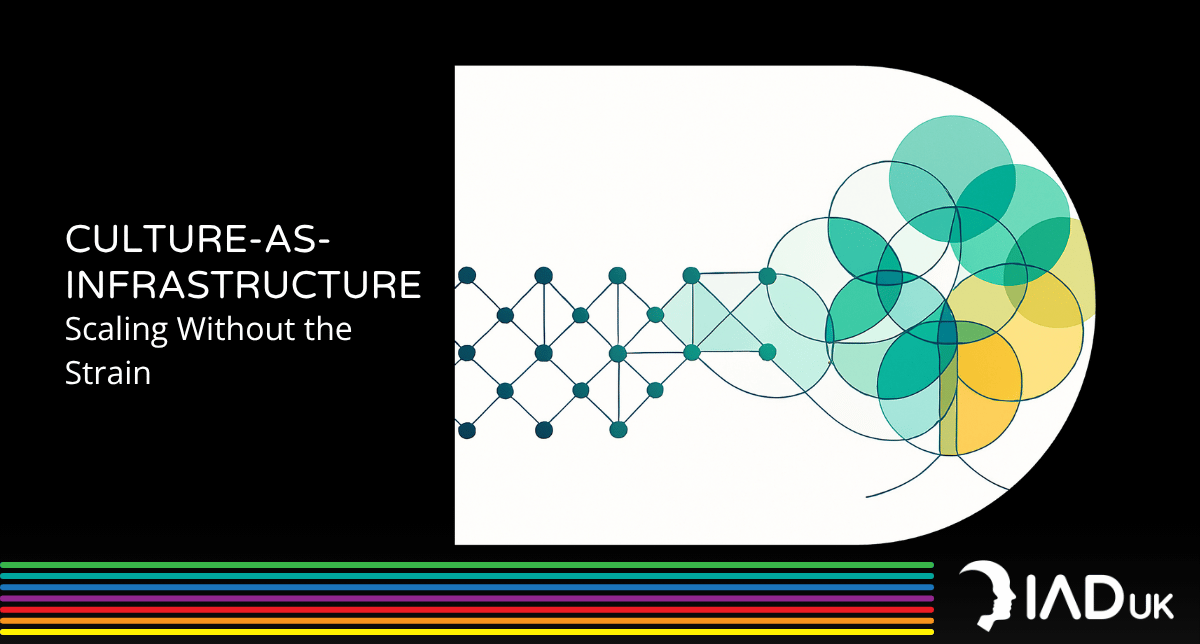Burnout Is a Fit Problem, Not a Wellness Problem
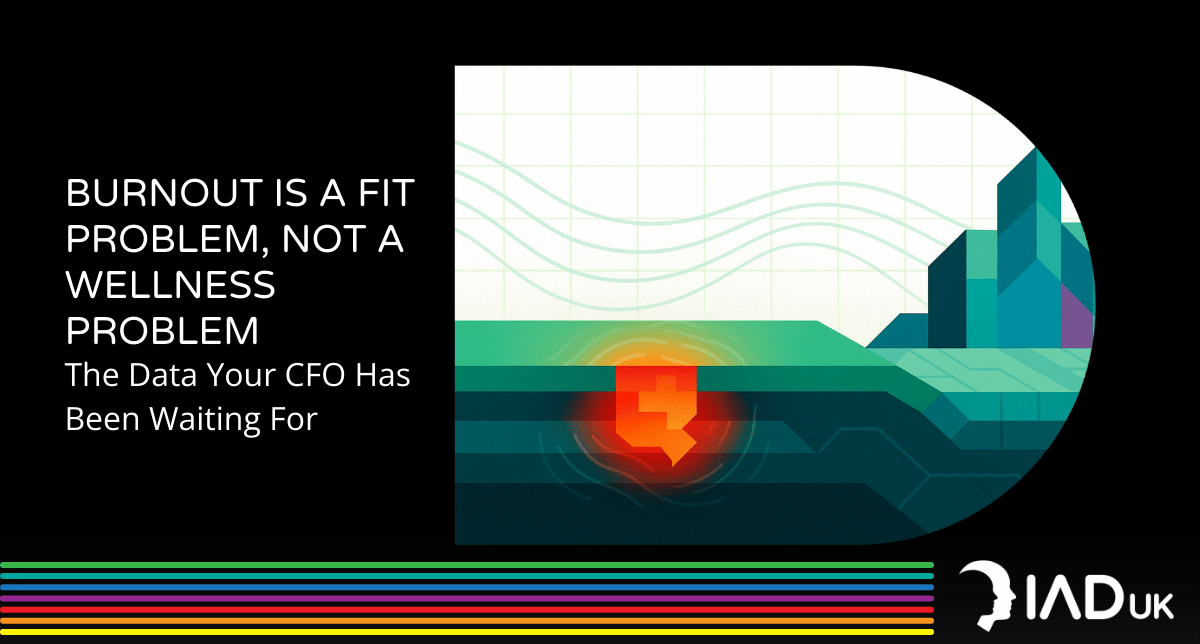
The data your CFO has been waiting for
The global workplace wellbeing industry is booming, driven by an increasing recognition that burnout is reaching crisis proportions. In response, organisations have poured resources into wellness initiatives designed to enhance employee wellbeing and resilience. From mindfulness sessions and yoga classes to mental health apps and employee assistance programmes, the workplace is awash with offerings aimed at managing stress and enhancing psychological wellbeing.
However, despite significant investments, burnout rates continue to escalate rather than subside. According to the Mental Health UK Burnout Report 2025, 91% of UK adults experienced high or extreme levels of pressure or stress within the last year, while 21% needed time off work due to mental health issues directly related to burnout1. Particularly concerning, burnout disproportionately affects younger workers. Approximately 35% of workers aged 18–24 required leave due to stress or burnout symptoms, highlighting the acute vulnerability of younger employees1. Furthermore, the proportion of younger employees comfortable discussing stress with their managers sharply declined from 75% to 56% within the past year, reflecting significant gaps in organisational support precisely when it is most needed1.
These statistics illuminate a troubling paradox. If wellness initiatives are being funded and deployed extensively, why is burnout still rising so dramatically? The issue, as emerging research suggests, lies not in the wellness solutions themselves, but in the fundamental misdiagnosis of burnout as primarily an individual wellbeing problem. Instead, burnout is increasingly understood as a systemic and structural issue: a mismatch between employees' cognitive and emotional capacities and the complexity of their organisational roles2.
Deloitte’s influential 2025 Human Capital Trends report reflects this emerging understanding, shifting the conversation from conventional wellbeing programmes toward a broader strategic imperative of human sustainability3. This approach recognises employees not merely as individuals requiring support, but as complex thinkers operating within demanding organisational contexts. For Heads of Organisational Development, the implications are profound. The key to reducing burnout lies not in managing its symptoms but in proactively addressing its systemic, structural roots.New Paragraph
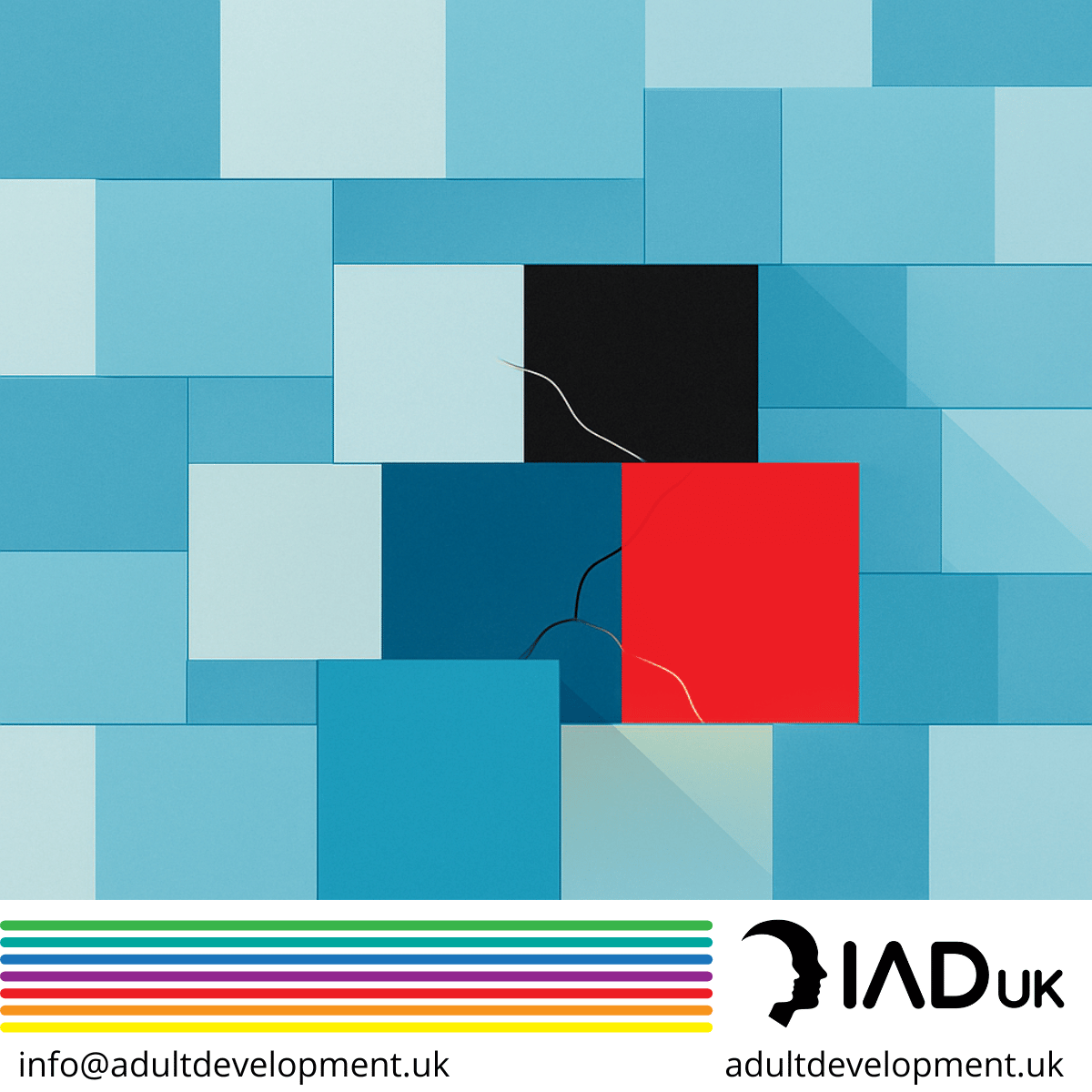
This article explores why traditional wellness initiatives alone are insufficient, introduces a new understanding of burnout as a "fit" issue, and highlights how addressing cognitive complexity gaps can provide both sustainable wellbeing and measurable financial returns. A growing body of evidence suggests that by reframing burnout as a structural alignment challenge, organisational leaders can foster genuine wellbeing and unlock significant productivity and financial advantages.
The message to Heads of OD is clear: To make real progress, it's time to shift our organisational focus from superficial solutions to structural transformations that align people’s complexity with the demands of their roles. The data your CFO needs to champion genuine change is finally here.
Why Wellness Programmes Miss the Mark
Workplace wellness programmes have become ubiquitous, reflecting a genuine desire by organisations to support their people. UK businesses are currently investing significantly in these initiatives, contributing to a global industry anticipated to surpass $94 billion by 20263. Common interventions include gym memberships, mental health apps, mindfulness sessions, resilience workshops, and employee assistance programmes designed to enhance individual wellbeing and stress management.
Yet, despite this widespread deployment of resources, burnout persists at alarmingly high levels. According to recent research, 91% of UK adults experienced high or extreme levels of pressure or stress within the past year, a statistic unchanged from previous years despite substantial wellness investments1. Even more alarming, approximately one in five UK workers required time off work due to burnout-related mental health issues, demonstrating the limited effectiveness of existing interventions1.
A closer examination reveals that traditional wellness programmes tend to address burnout primarily as an individual problem rather than as a systemic organisational issue. McKinsey & Company’s research identifies toxic workplace behaviours, unrealistic workloads, insufficient managerial support, and poor organisational culture as major predictors of burnout, yet conventional wellness strategies frequently overlook these structural factors4. According to recent analysis in the Harvard Business Review, workplace wellness initiatives generally deliver only limited improvements in burnout and associated outcomes, primarily because they fail to tackle underlying systemic workplace stressors and focus predominantly on individual coping strategies3. As a result, these programmes often provide superficial relief without creating lasting or meaningful change.

Moreover, generational data underscores the inadequacy of current wellness programmes. Younger workers, notably Generation Z and Millennials, face uniquely heightened vulnerabilities. They encounter peak burnout at the age of just 25 and are significantly more likely to experience prolonged absences due to stress or mental health-related issues compared to older colleagues1. The Burnout Report further highlights a concerning decline in younger employees' confidence to openly discuss mental health concerns with management, from 75% to just 56% within one year. This shift signals a worrying erosion of psychological safety precisely when organisations should be bolstering supportive dialogues1.
Additionally, the issue of presenteeism (employees continuing to work despite being unwell) exacerbates the situation. One in five UK workers admit that their productivity was significantly impacted by stress, yet they felt unable to adjust their workload or seek appropriate support1. This silence and reluctance reflect deeply entrenched cultural barriers within workplaces, where taking time off for mental health concerns remains stigmatised.
In summary, the current approach, focused heavily on individual coping mechanisms, consistently fails to confront the underlying organisational dynamics that fuel burnout. Wellness programmes alone, while beneficial in limited ways, fall short of delivering the sustainable wellbeing they promise. This mismatch between investment and outcome demands a strategic shift in perspective. To meaningfully reduce burnout, Heads of Organisational Development must advocate systemic changes addressing workplace structures, managerial practices, and cultural norms. The focus must shift from reactive wellbeing perks toward proactive, structural solutions tailored to the true drivers of burnout.
Burnout as a Structural "Fit" Problem
Burnout is not a symptom of individual fragility. It is a signal of systemic misfit. When employees are consistently exposed to demands that exceed their cognitive, emotional, or relational capacities, stress becomes chronic and performance unsustainable. The root issue is not whether someone is coping well enough, but whether they are being asked to operate beyond their current ability to process and respond to complexity.
This concept of "structural fit" reframes burnout from an individual resilience deficit to a mismatch between the demands of a role and the thinking required to navigate it. When the complexity of a role outpaces a person’s cognitive development, even highly capable individuals begin to falter: not for lack of effort, but due to an invisible capacity gap that erodes effectiveness over time. It is this chronic misalignment, rather than acute stressors alone, that most reliably predicts exhaustion, disengagement, and departure.
The research is clear: structural drivers such as role ambiguity, lack of decision latitude, and unclear organisational purpose are more predictive of burnout than individual personality traits or mental health histories4. However, these systemic contributors often remain hidden in plain sight. Performance reviews focus on outcomes, not upstream misalignments. Wellbeing conversations centre on support services, not cognitive load. And leadership training addresses behaviours, not the developmental stages underpinning them.
This is where the language of cognitive complexity becomes vital. Drawing on insights from Constructed Development Theory and vertical development research, burnout can be understood as the product of a complexity gap: a mismatch between the complexity of thinking demanded by a situation and the individual's current ability to interpret, integrate, and act on that complexity. In practical terms, someone operating from AQ6 (Steven’s Awareness Quotient level six) may struggle to perform in a role that consistently requires AQ8-level sense-making. The longer that misfit persists, the greater the mental and emotional toll.
This is not a deficit model. The issue is not that people lack intelligence or drive, but that organisations often promote or overload individuals without assessing or supporting the developmental journey required for success. As Kegan and Lahey highlight in An Everyone Culture, most organisations are “designed for execution, not development”, and as a result, they unintentionally generate burnout by pushing people into adaptive territory without the scaffolding needed to grow into it2.

Understanding burnout as a fit problem changes the solution set. Instead of prescribing resilience workshops or meditation apps, leaders must learn to diagnose and address the structural causes of cognitive overload. This requires a shift in mindset from managing energy to managing complexity. When the developmental demands of a role exceed a person’s current capacity, the result is not only burnout; it is predictable underperformance.
To build truly sustainable organisations, we must stop asking, “Why are people burning out?” and start asking, “Where is the misfit between thinking and task?” Only then can we design systems that support human sustainability from the inside out.
Introducing the Complexity Gap Diagnostic (CGD)
If burnout is the result of a persistent complexity gap, then organisations need tools that can detect that gap before the consequences become visible in absenteeism, disengagement, or turnover. This is precisely the function of the Complexity Gap Diagnostic (CGD): a key instrument within the Dynamic Intelligence Development System (DIDS).
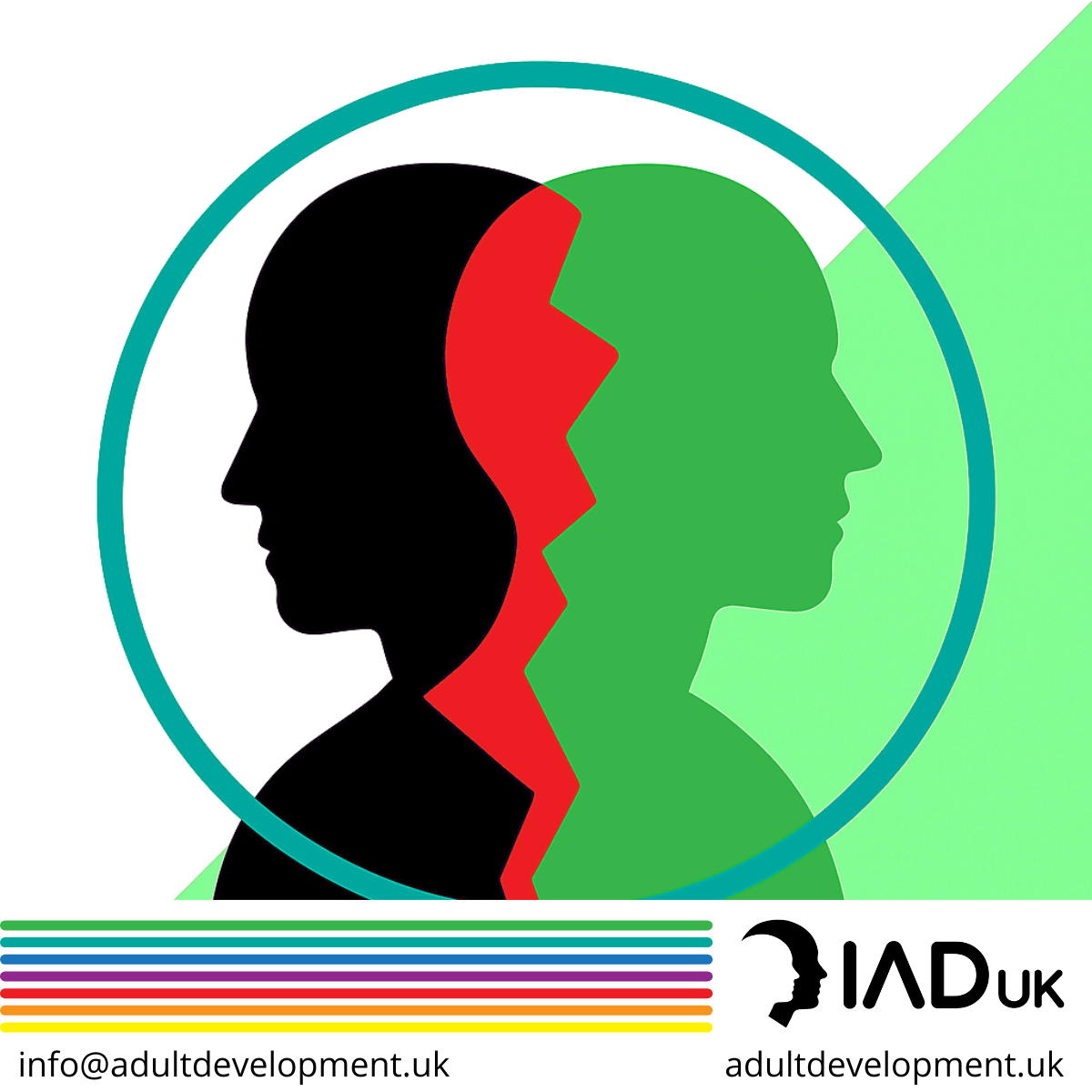
Unlike traditional performance assessments or engagement surveys, which focus on outputs or emotional states, the CGD provides a structural analysis. It evaluates the fit between an individual’s current Awareness Quotient (AQ) and the cognitive demands of their role. Where conventional approaches might ask, “How is this person feeling?”, the CGD asks, “Is this role cognitively sustainable for this individual?” That difference is not semantic: it is strategic.
The CGD draws on over a decade of developmental theory and psychometric design to offer an early-warning system. It detects when employees are being asked to operate beyond their current cognitive stage, not in terms of intelligence but in terms of the complexity of their meaning-making processes. This distinction is critical. Burnout does not stem from lack of capability, but from prolonged exposure to demands that require a higher level of abstraction, integration, and decision-making than the individual has yet developed.
To illustrate how this works, consider a hypothetical example inspired by real patterns observed in client organisations.
Case Scenario: “Alex”
Alex is a high-performing senior analyst recently promoted to lead a strategic transformation project. On paper, the transition makes sense. Alex is conscientious, technically proficient, and has deep institutional knowledge. But within six months, signs of burnout begin to appear: fatigue, irritability, missed deadlines, and increasing ambiguity in team communications. Traditional interventions, including coaching and workload reduction, yield temporary improvements but fail to resolve the underlying strain.
A CGD assessment reveals a telling gap: the role Alex has stepped into requires sustained operation at AQ8, but Alex’s current developmental profile reflects AQ6. The task environment demands complex systems thinking, stakeholder orchestration, and recursive feedback integration: capacities that have not yet stabilised in Alex’s cognitive repertoire. The result is not failure, but chronic overexertion in an adaptive space that exceeds their current developmental bandwidth.
By identifying this gap early, the organisation gains options. They can support Alex’s development through targeted vertical interventions, rebalance project responsibilities to reduce overload, or redesign the role to align better with current capacity. Most importantly, they avoid the costly cycle of performance decline, wellbeing erosion, and eventual attrition.
The power of the CGD lies in its ability to make the invisible visible. It brings to light the developmental tensions that precede burnout, allowing leaders to intervene not at the point of crisis, but at the point of cause. It also provides a shared language for addressing cognitive fit: a shift from blaming individuals for “not coping” to exploring where the system may be asking too much, too soon, without support.
For Heads of Organisational Development, this diagnostic capability marks a step-change in how we approach wellbeing, leadership, and performance. It moves the conversation upstream, away from fire-fighting symptoms and toward designing conditions where people can thrive because they are developmentally aligned with the complexity they are required to hold.
The CFO Connection
Why Your Finance Team Will Champion This
Reframing burnout as a structural misfit rather than a personal failing does more than improve wellbeing outcomes. It translates directly into financial terms. For CFOs concerned with the bottom line, the economic implications of unresolved complexity gaps are both measurable and material.
Burnout is expensive. It drives up absenteeism, presenteeism, medical costs, and turnover. It erodes productivity, slows strategic initiatives, and destabilises high-performing teams. According to Mental Health UK (2025)1, over one-fifth of UK employees needed time off in the past year due to burnout-related mental health issues. Yet many of those affected remained at work long after symptoms began to surface: unable or unwilling to raise concerns, but cognitively and emotionally depleted. This silent loss of effectiveness is one of the most under-reported costs in modern organisations.
Finance leaders are beginning to recognise that wellness spend alone does not equate to wellness impact. Deloitte’s 2025 Human Capital Trends report reflects a significant pivot: 85% of executives now see “human sustainability” as a key business priority, and 74% are actively redesigning work to reduce fatigue and burnout: not just for moral reasons, but for performance gains5. When human sustainability becomes a strategic lever, CFOs must be equipped to quantify both the risks of misfit and the ROI of early intervention.
This is where the Complexity Gap Diagnostic becomes especially valuable. Unlike traditional wellbeing metrics, which track downstream outcomes, the CGD surfaces leading indicators, providing actionable data about where cognitive overload is likely to undermine performance before costs accrue. By identifying employees operating beyond their sustainable AQ level, organisations can avoid unnecessary attrition, reduce sick leave, and reallocate development resources where they will have the highest return.
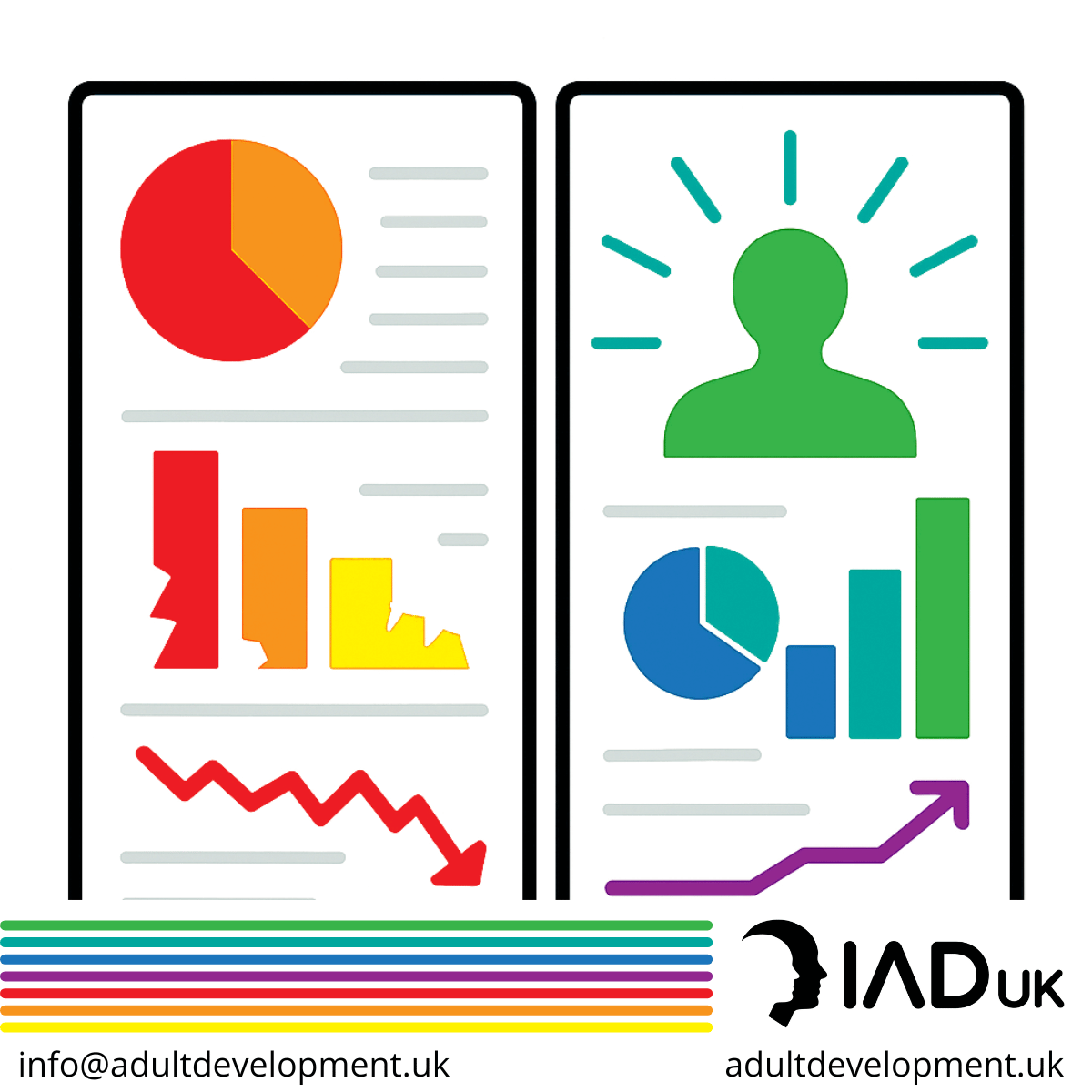
The business case is straightforward: misalignment costs money, but alignment creates capacity. When people are operating within their cognitive range (or are scaffolded to grow into it) they make better decisions, adapt more quickly, and contribute more consistently to strategic goals. These aren’t soft outcomes. They are the foundations of execution velocity, risk management, and long-term value creation.
For finance leaders tasked with doing more with less, the appeal of CGD is not just in reducing risk, but in optimising resource allocation. Instead of broadly applied training budgets or blanket wellbeing programmes, development investments can be targeted where the fit is weakest, and the need for growth most urgent. Burnout becomes not just a health issue, but a signal of organisational inefficiency: a fixable one.
Ultimately, the CFO’s role is to ensure that the organisation is operating at peak effectiveness. That requires aligning not only capital and operations, but also human capacity with the complexity of work. The CGD provides the data infrastructure to do exactly that.
Moving from Reactive to Strategic Wellbeing
The failure of traditional wellness programmes does not signal a lack of effort, it signals a misalignment of intent and approach. Most wellbeing strategies remain reactive, designed to alleviate stress after it has already taken hold. They respond to symptoms: rising absence, low morale, team conflict, deteriorating performance. But by the time these indicators appear, the underlying complexity gap has already widened. Recovery becomes more costly, outcomes less predictable, and talent often irretrievable.
Strategic wellbeing demands a different orientation. Rather than addressing burnout as a health event, it treats it as a systemic pattern emerging from poor structural fit. In this frame, wellbeing is no longer a discretionary perk or HR initiative. It becomes a shared leadership responsibility tied directly to role design, developmental scaffolding, and organisational performance.

This shift requires Heads of Organisational Development to reimagine their influence. Rather than being stewards of culture or custodians of engagement, they become architects of fit: designing environments where people can grow into complexity without being crushed by it. That means working in closer partnership with finance, operations, and strategy leaders to align structures and systems with the evolving capabilities of the workforce.
The Complexity Gap Diagnostic offers a foundation for this work. It enables organisations to shift from a one-size-fits-all approach to wellbeing, toward a precision strategy based on real-time developmental data. When leaders understand where complexity gaps exist (and how those gaps are affecting execution, engagement, and health) they can make more informed choices about resource allocation, talent deployment, and leadership development.
This reframing also changes the timing of intervention. Instead of waiting for a performance problem or a mental health crisis, leaders can proactively engage with individuals and teams where developmental strain is beginning to show. In doing so, they not only prevent burnout: they accelerate growth.
Strategic wellbeing is not about reducing pressure. It’s about building capacity. Organisations that invest in aligning people with complexity, rather than simply managing stress, don’t just retain their talent. They unlock it. And in doing so, they position themselves to thrive in dynamic environments where adaptability, insight, and sustained performance are not optional, but essential.
Time to Change the Conversation
The wellbeing conversation is overdue for transformation. Burnout is not a personal failing, a byproduct of weak boundaries, or a problem to be solved through yoga mats and digital detoxes. It is a structural signal: a warning light indicating a misalignment between the cognitive demands of a role and the developmental readiness of the person occupying it.
This insight changes everything. It reframes wellbeing from a collection of perks to a question of fit. It allows OD leaders to move from reactive programme delivery to proactive structural design. And it brings the language of human sustainability into strategic alignment with the language of finance, risk, and performance.
The Complexity Gap Diagnostic does not promise to eliminate burnout. It offers something more practical and powerful: a method to see it coming. By detecting developmental misfit before it manifests as disengagement or breakdown, the CGD allows organisations to act early: protecting their people, preserving their productivity, and building the capacity they will need to navigate what’s next.
For Heads of Organisational Development, this marks a pivotal opportunity. It is time to lead a different conversation. One grounded not in wellbeing as sentiment, but in wellbeing as system. One that challenges the adequacy of reactive support and builds a future where sustainable performance is structurally possible.
Book a complementary call with us to learn how the Complexity Gap Diagnostic can help your organisation anticipate burnout, close capacity gaps, and create the conditions where people, and results, can thrive.
Alternatively, why not download your complementary copy of our new book: An Introduction to the Dynamic Intelligence Development System™
References:
- Mental Health UK. (2025). The Burnout Report 2025: https://mentalhealth-uk.org/burnout
- Kegan, R., & Lahey, L. L. (2016). An Everyone Culture: Becoming a Deliberately Developmental Organization. Harvard Business Review Press.
- Harvard Business Review. (2024). Why Workplace Well-Being Programs Don’t Achieve Better Outcomes: https://hbr.org/2024/10/why-workplace-well-being-programs-dont-achieve-better-outcomes
- McKinsey & Company. (2025). Addressing Employee Burnout: Are You Solving the Right Problem?: https://www.mckinsey.com/mhi/our-insights/addressing-employee-burnout-are-you-solving-the-right-problem
- Deloitte. (2025). 2025 Global Human Capital Trends: Thriving Beyond Boundaries.: https://www2.deloitte.com/us/en/insights/focus/human-capital-trends/2025.html

